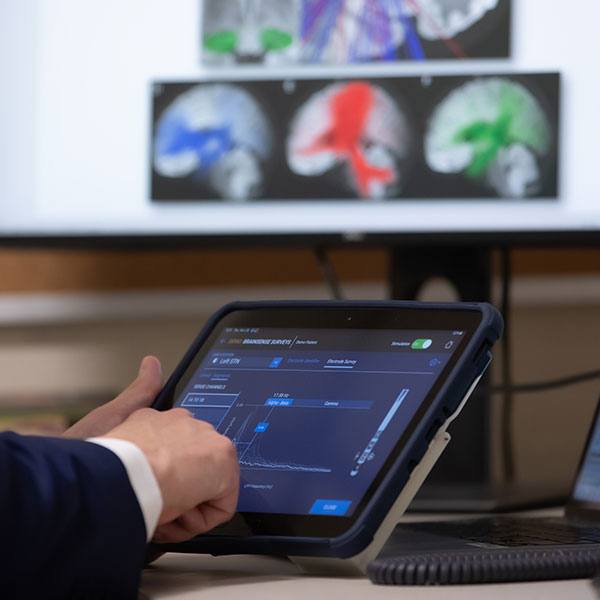-
Revealing the hidden tips for success as an academic researcher
A few years ago, Felicity Enders, Ph.D., felt uncertain about her path forward as an academic researcher. She was on a successful route as a Mayo Clinic biostatistician who had published high-impact papers and had spoken at international conferences. Even so, she felt she lacked information about how to rise as a researcher in academia.
As she began identifying the missing "how-to" that could propel her career, she realized that the junior faculty she was mentoring were eager for similar insights. What’s more, some essential career information had been missing throughout Ph.D. training.
Her work has taken on advancing the information that's called the "hidden curriculum." The term refers to norms, values and behaviors within a learning environment that are necessary for success. And they're not always obvious. Dr. Enders and several students at Mayo Clinic Graduate School of Biomedical Sciences are exploring the hidden curriculum to improve the training and advancement of academic researchers. Their efforts are changing conversations at Mayo Clinic and across the country.
Familiar concept, new realm
The concept of "hidden curriculum" first appeared in general education studies in the 1960s to describe how young students learned values and behaviors in classrooms. It was the knowledge students gleaned beyond the information in textbooks.
In the 1990s, Mayo faculty applied the same idea to medical school. Frederic Hafferty, Ph.D., now emeritus professor of medical education, helped introduce the concept of hidden curriculum in medical training. He used the term to describe the subtle ways students develop compassion, integrity and medical ethics — an area that became known as the instruction of "professionalism." Several Mayo Clinic educators have since published research about how students learn professionalism from both didactic training and physician mentors.
But until recently, the idea of a hidden curriculum hadn’t been applied to the world of academic healthcare research. Two years ago, Dr. Enders organized a workshop for more than 100 biomedical research faculty and graduate students at the national meeting of the Association for Clinical and Translational Science. The idea of a hidden curriculum was new to many, but attendees shared that they’d struggled to figure out how to advance at every stage of training.
"It became clear there was information people needed to know and didn’t have words for," says Dr. Enders, associate director of Mayo Clinic's Center for Clinical and Translational Science.
Karen DSouza, a fifth-year Ph.D. candidate at Mayo Clinic Graduate School of Biomedical Sciences, was among several students who helped lead the workshop. Her research, under Dr. Enders' mentorship, studies fertility preservation practices in transgender and gender-diverse patients. The child of immigrant parents and the first in her family to pursue a Ph.D. in science, she's also interested in making positive changes to education.
"The goal of the workshop was to begin to uncover and identify the messages missing in research training," she explains. "It was information I wished I'd had when I was a younger student."
Identifying the missing messages
Hidden curriculum isn't necessarily withheld from students intentionally, DSouza adds. For example, mentors may assume that graduate students recognize each scientific conference as an opportunity to build a network and tout their own work. In reality, graduate students may not know how to begin building professional relationships — and it may not occur to mentors to offer advice on the topic.
"It’s hard to give information, or ask for it, if you don’t know it’s missing," Dsouza says.
At Dr. Enders' workshop, attendees compiled a checklist of important messages for career advancement that should be made explicit, both for graduate students and their mentors. The discussion led Dr. Enders and several graduate students to write a journal article about several topics of hidden curriculum that could be helpful. The article was recognized with a publication award from the Journal of Clinical and Translational Science.
Addressing the challenge of bias
Dr. Enders' work has found all students are affected by missing information. But the burden of a hidden curriculum can be greater for students from diverse backgrounds, especially those belonging to groups underrepresented in science. Those who are first-generation college or graduate students may not have family or friends in a scientific field who can make professional introductions. Students from international institutions may not know the right questions to ask about job searches or grant applications.
Adriana Morales Gomez, a fourth-year Ph.D. candidate who grew up in Puerto Rico with parents from Colombia, studies novel genetic approaches to treating amyotrophic lateral sclerosis, or ALS. She became involved in hidden curriculum discussions during her first year and presented on the topic at the Special Scholars' Interest Group of the Association of Clinical and Translational Science.
She hopes that exposing hidden curriculum will help support students from diverse backgrounds. "Beyond learning the science, much of the academic research world is about talking to people, networking and understanding the social norms of your institution," she says.
Importantly, as the workshop members noted, students who are diverse also cope with bias – even unintended slights or microaggressions – that occur in the work setting. To address unconscious bias, the workshop suggested students may benefit from building relationships, finding others who are facing the same issues and allies who speak up. They can learn ways to address instances of bias in the moments they occur. Mentors can help by advocating for institutional changes and programs.
Helping institutions step up
These days, Dr. Enders takes extra steps to prepare her students for conferences. She advises them to read up on the scientists who will be there. She suggests sending emails introducing themselves to those who might help build their network. "They may not know to do that otherwise," she says.
As the workshop participants emphasized, Dr. Enders believes this issue also needs to be addressed on a larger scale. "People felt institutions should use their infrastructures to implement and support change," she says.
At Mayo Clinic, several changes are already underway. Within the graduate school, aspects of hidden curriculum are included in a faculty training program called Maximizing Mentoring Relationships that provides researchers with best practices to direct students in their labs. Several programs for graduate students, such as the Initiative for Maximizing Student Development, Leadership in Ph.D. (known as LEAP) and others, are raising awareness about hidden curriculum, providing information and strategies. "We're helping students navigate unspoken rules, norms and behaviors that can, left unaddressed, have a negative impact on their learning and professional development," says J. Luis Lujan, Ph.D., associate dean of student affairs.
Some changes at Mayo Clinic are also designed to address later-stage professional needs, including a tool that pops up in a staff annual review that invites established researchers to provide career help, for example, by fostering the networking of an early-career scientist.
Expanding the effort
Hidden curriculum is spreading to other academic institutions. Tayla Brooks, a third-year Ph.D. candidate researching new targets to treat liver, gall bladder and bile duct cancers, co-leads a national hidden curriculum working group. It includes faculty and students from more than 40 academic research centers through the Association for Clinical and Translational Science.
The group hopes to describe hidden curriculum further and to identify messages relevant to subgroups in academia, such as racial and ethnic groups, first-generation students, women or students with disabilities. Ultimately, the participants aim to write an academic paper, providing institutions with recommendations and intersectional guidelines.
"We're working on how to tackle these issues, which are complex and haven't been named before,” says Brooks. "We're figuring out what we can do now and what we can work on to help change things in the future."
—Kate Ledger
Related Articles











